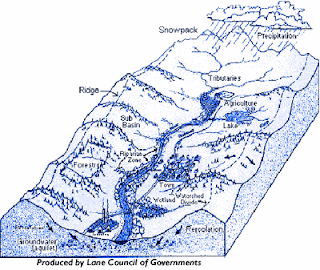- Measuring earthquakes and volcanoes
There are many ways to measure and earthquake. Magnitude is the most common way to measure an earthquake’s size. It is a measure of the size of the earthquake source and is the same number no matter where you are or what the shaking felt like. The Richter scale measures the largest shake on the recording, but there are other magnitude scales that measure different parts of the earthquake. Another way to measure an earthquake is to measure the intensity, or the shaking or damage done. This value changes depending on the epicenter or focus; the closer to the fault of the earthquake, the more damage done, and visa versa.1
Measuring Earthquakes; http://teamforce.wikispaces.com/CSTC+2.2
The area around a volcano swells, deflates or shifts as the lava or magma moves around inside of it. There are scientists that can watch the movement of these volcanoes and determine if they are going to blow. They use spirit level surveys to measure elevation changes. A spirit level is a telescope with its optical axis aligned to horizontal with a level vial.2
Erupting Volcano; http://denialdepot.blogspot.com/2009/04/co2-levels-may-have-been-over-2000ppm.html
- Chemical Composition of Magma
Magma is a mixture of liquid rock, crystals, and dissolved gas. The human eyes have seen the only part on earth that is liquid which is the outer core. But the core is not likely to be the source of magma because it doesn’t have the right chemical composition. The outer core, or crust, is mainly Iron, but magma is a silicate liquid. Thus, Magma doesn’t come from the Earth’s crust. Since the rest of the Earth’s crust is sold, some part of the earth, below the surface, must get hot enough to melt the rocks to form magma.3
How does magma move the tectonic plates?
The earth is like a giant puzzle with the tectonic plates as the pieces. Every year, the tectonic plates move a centimeter or two. The ocean floors are constantly moving and spreading. As these tectonic plates move, the earth’s crust is moving and magma deep in the earth’s core is being pushed upward causing the earth’s crust to bend upward, creating mountains and volcanoes. These plates spread farther to make room for this pressure the magma lays on the earth’s outer core. When the magma is under a great amount of pressure, the volcano will erupt sending tons of ash, lava, and rocks into the air and plummeting down onto earth’s surface.4
Volcano creation; http://www.pacificislandtravel.com/nature_gallery/volcanoes.html
C.) The Atmosphere, Hydrosphere, and other Earth Systems
The Atmosphere:
Volcanoes affect the atmosphere by volcanic eruptions releasing lots of gases into the air, some of which pollute the environment and affect the atmospheric content. A main problem in Hawaii
Hydrosphere:
In Hawaii
Lava running into the ocean; http://lovingthebigisland.wordpress.com/2009/01/15/volcano-watch-worlds-active-volcanoes-keep-scientists-busy-in-2008/
hvowebmaster@usgs.gov; Hawaiian Volcano Observatory. (1998)
Professor Stephen A. Nelson; Tulane University
Wikipedia Answers Corp. (2011)
Volcano World: Supplement; Volcano Activity Reports and News; Worldpress.com. (2011)







